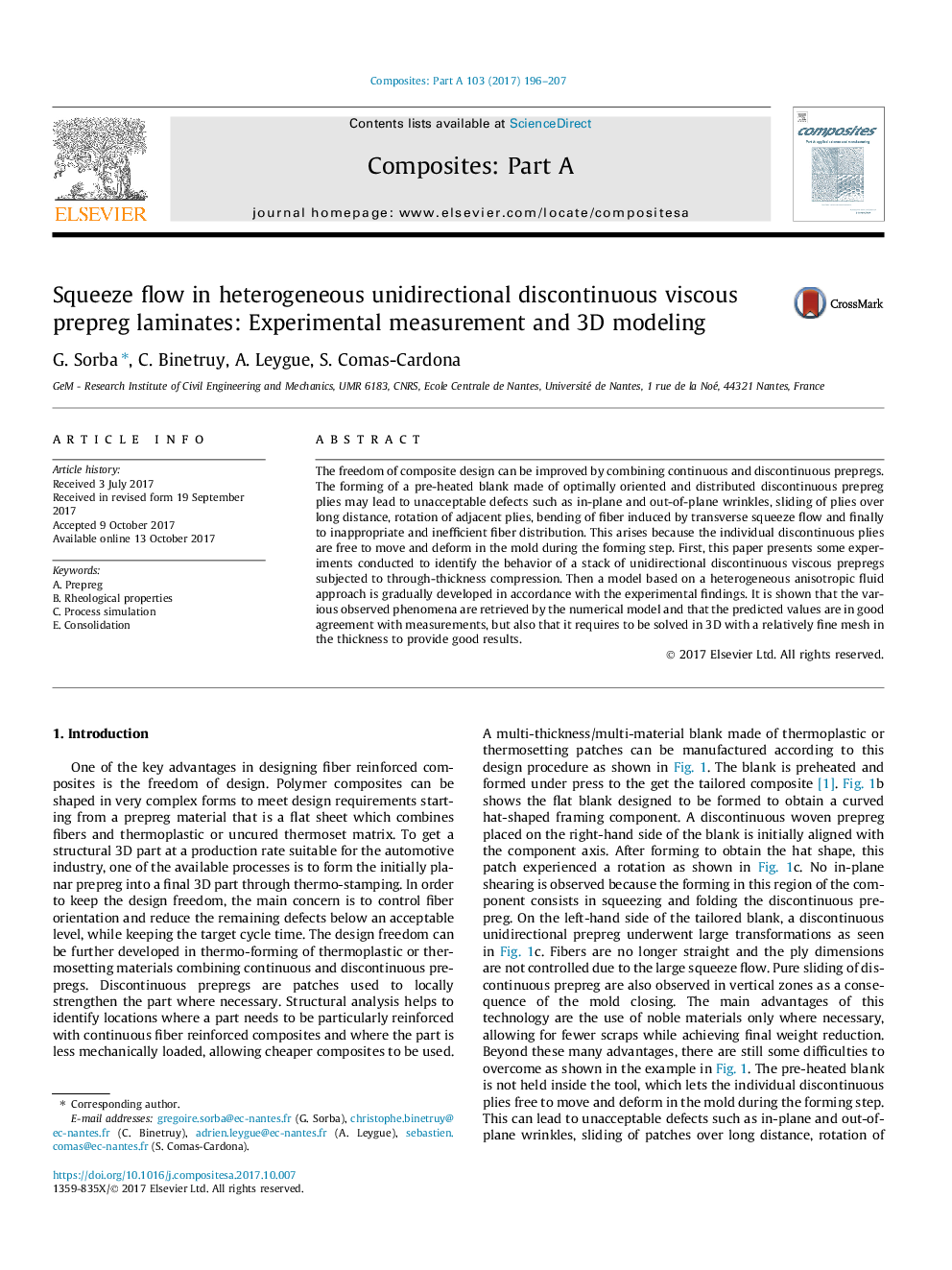| Article ID | Journal | Published Year | Pages | File Type |
|---|---|---|---|---|
| 5439374 | Composites Part A: Applied Science and Manufacturing | 2017 | 12 Pages |
Abstract
The freedom of composite design can be improved by combining continuous and discontinuous prepregs. The forming of a pre-heated blank made of optimally oriented and distributed discontinuous prepreg plies may lead to unacceptable defects such as in-plane and out-of-plane wrinkles, sliding of plies over long distance, rotation of adjacent plies, bending of fiber induced by transverse squeeze flow and finally to inappropriate and inefficient fiber distribution. This arises because the individual discontinuous plies are free to move and deform in the mold during the forming step. First, this paper presents some experiments conducted to identify the behavior of a stack of unidirectional discontinuous viscous prepregs subjected to through-thickness compression. Then a model based on a heterogeneous anisotropic fluid approach is gradually developed in accordance with the experimental findings. It is shown that the various observed phenomena are retrieved by the numerical model and that the predicted values are in good agreement with measurements, but also that it requires to be solved in 3D with a relatively fine mesh in the thickness to provide good results.
Related Topics
Physical Sciences and Engineering
Materials Science
Ceramics and Composites
Authors
G. Sorba, C. Binetruy, A. Leygue, S. Comas-Cardona,
